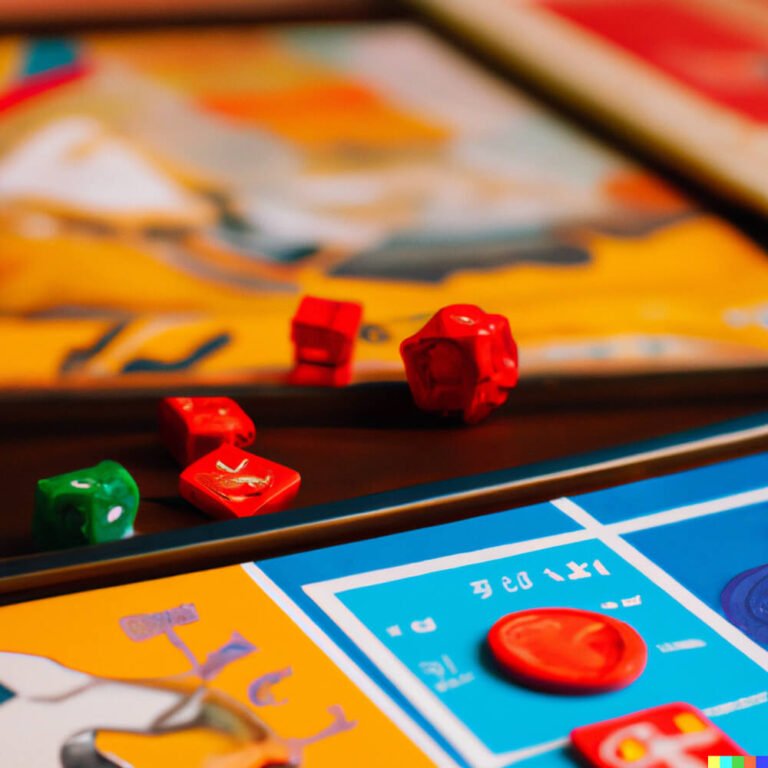The Clue Classic Board Game Brown Box – a beloved icon of mystery and intrigue that has captivated generations of players. From its inception, this timeless game has engaged players in a thrilling race to solve a murder mystery, all within the confines of a stately mansion.
But what is it about this particular edition, with its distinctive brown box, that continues to hold such allure? In this article, we will delve into the world of the Clue Classic Board Game Brown Box, uncovering its history, examining its components, and exploring the strategies for success.
Clue, also known as Cluedo in many parts of the world, was first introduced in 1949 by Anthony E. Pratt. With its innovative gameplay and intricate plotline, it quickly became a staple among board game enthusiasts. This article aims to trace the origins of Clue and shed light on how this classic game evolved into the beloved version found in the brown box.
Upon opening the iconic brown box of the Clue Classic Board Game, players are greeted with an array of intriguing components. From miniature figurines representing suspects to a detailed game board reminiscent of a grand manor setting, each piece adds depth to the gaming experience. We will examine these components in detail and discuss their significance in unraveling the mystery at hand.
As we embark on this journey through the world of Clue Classic Board Game Brown Box edition, we invite you to rediscover the excitement and challenge that comes with solving a complex whodunit. Whether you’re a seasoned detective or just starting your investigation into this classic board game phenomenon, there is always something new to discover within those pages of mystery waiting inside that iconic brown box.
Are you ready to step into a world where every move counts and every clue matters? Let us unravel the mystery together.
A Brief History of Clue
The Clue Classic Board Game, also known as Cluedo in certain parts of the world, has become an iconic and beloved game since its inception. Tracing the history of this classic board game reveals a fascinating journey from its creation to its enduring popularity today.
The origins of Clue can be traced back to the early 1940s when a British musician and solicitor named Anthony E. Pratt came up with the concept for a murder mystery-themed game. Inspired by detective novels and Sherlock Holmes stories, Pratt wanted to create a game that would challenge players to solve a murder mystery.
Pratt initially called his game “Murder.” and presented it to various manufacturers, but it was not until it caught the attention of Waddingtons, a British firm, that it began to gain traction. The company saw potential in the concept and collaborated with Pratt to refine the gameplay and design. In 1949, the first edition of Cluedo was released in the United Kingdom, featuring characters such as Miss Scarlet, Colonel Mustard, Mrs. Peacock, Professor Plum, Mr. Green, and Mrs. White.
| Year | Event |
|---|---|
| 1949 | First edition of Cluedo released in the United Kingdom by Waddingtons. |
| 1950 | Parker Brothers launches Clue in the United States. |
| 1985 | The game is revamped with new character names and backstories. |
The success of Clue quickly spread beyond Britain’s borders when Parker Brothers acquired the rights and launched the game under the name Clue in the United States in 1950. From there, it gained international acclaim and became a staple of board game collections around the world.
Over the years, Clue has gone through various updates and adaptations to keep up with changing times and audience preferences. In 1985, the game underwent a significant revamp, featuring new character names, backstories, and a visually updated design. These changes gave the game a fresh appeal while still preserving its core mechanics and mystery-solving gameplay.
Today, Clue continues to captivate players young and old with its timeless combination of deduction, strategy, and suspense. Its enduring popularity has also led to numerous spin-offs, themed editions, video games, and even a cult classic movie adaptation. The history of Clue is one of innovation, intrigue, and sheer entertainment – solidifying its place as one of the most iconic board games of all time.
Inside the Brown Box
The Clue Classic Board Game Brown Box contains all the necessary components for an exciting night of detective work. When you first open the box, you will find a game board depicting the layout of Mr. Boddy’s mansion and its various rooms. The board is beautifully illustrated and sets the stage for the mystery that is about to unfold.
Next, you will discover six colored playing pieces, each representing one of the iconic characters in the game. These characters include Colonel Mustard, Miss Scarlet, Professor Plum, Mrs. Peacock, Mr. Green, and Mrs. White. Choose a character to embody for the duration of the game and get ready to delve into their secretive lives.
Accompanying these character pieces are a set of unique weapons that could potentially be used to commit murder in different rooms of the mansion. These weapons include a candlestick, a knife, a rope, a lead pipe, a wrench, and a revolver. Use your deduction skills to identify both the murderer and the weapon they used.
To navigate through Mr. Boddy’s mansion and gather clues, players will use a deck of cards featuring all possible suspects (including themselves), rooms in the mansion, and weapons. These cards are crucial in narrowing down possibilities and ultimately solving the mystery at hand.
As you continue unboxing the Clue Classic Board Game Brown Box edition, you will also find tiny detective notepads where players can make notes as they gather information throughout gameplay. These notepads are essential tools to keep track of clues and cross off possibilities as more information unfolds.
Unboxing the Clue Classic Board Game Brown Box is like opening a treasure trove filled with endless possibilities and countless hours of fun. With its beautifully designed components, this classic board game continues to captivate both newcomers and long-time fans alike.
| Components | Description |
|---|---|
| Game Board | A beautifully illustrated board depicting Mr. Boddy’s mansion and its rooms |
| Character Pieces | Six colored playing pieces representing the main characters in the game |
| Weapons | A set of unique weapons such as a candlestick, knife, rope, lead pipe, wrench, and revolver |
| Cards | A deck of cards featuring suspects, rooms, and weapons to gather clues |
| Detective Notepads | Tiny notepads for players to make notes and keep track of clues during gameplay |
The Intriguing Character Lineup
The Clue Classic Board Game Brown Box is not only known for its captivating mystery and suspense, but also for its intriguing character lineup. Each character in the game brings their own unique personality and backstory, making them a key component to solving the ultimate whodunit. In this section, we will dive deeper into the characters of Clue Classic and explore their individual traits and motives.
Colonel Mustard: The Dashing War Hero
Colonel Mustard is a distinguished military man with a reputation for bravery on the battlefield. With his strong build and commanding presence, he exudes an air of authority that demands attention. While he may come off as serious and rigid, underneath lies a gentleman who knows how to have a good time. Colonel Mustard’s connections to various government agencies make him an interesting suspect, adding an extra layer of intrigue to the game.
Miss Scarlet: The Seductive Femme Fatale
Miss Scarlet is the embodiment of allure and mystery. Her glamorous appearance and seductive charm make her the center of attention wherever she goes. Known for her cunning nature, Miss Scarlet has mastered the art of manipulation, using her charms to get what she wants. Don’t be fooled by her innocent facade; she is more than capable of committing a crime in order to protect her secrets.
Professor Plum: The Brilliant Intellectual
Professor Plum is a highly intelligent academic with a knack for solving puzzles and deciphering complex codes. His extensive knowledge in various fields makes him a valuable asset when it comes to unraveling mysteries. Behind his eccentric exterior lies a curious mind that constantly seeks knowledge and thrives on intellectual challenges. Though often lost in his own thoughts, Professor Plum’s astute observations can lead investigators one step closer to uncovering the truth.
Each character in Clue Classic brings their own twist to the game, making it a true test of deduction and strategy. From the cunning Miss Scarlet to the intellectual Professor Plum, each player must carefully analyze their fellow suspects’ actions and motives to uncover the truth behind the murder. The interactions between characters are vital in this classic board game, adding depth to the gameplay and allowing players to truly immerse themselves in the world of mystery and suspense.
In the next section, we will delve deeper into the setting of Clue Classic Board Game, exploring the intricacies of the mansion or manor where the game takes place.
Mansion or Manor? Exploring the Whodunit Setting of Clue Classic Board Game
In the Clue Classic Board Game Brown Box edition, players are transported to an intriguing and mysterious whodunit setting. The game is set in a mansion, where the murder has taken place, and it is up to the players to solve the crime by identifying the murderer, the weapon used, and the room where the crime was committed. This section will delve deeper into exploring this captivating setting of Clue.
The mansion in Clue Classic is designed with intricate details that add to the suspenseful atmosphere of the game. The board itself depicts a floor plan of the mansion, featuring multiple rooms such as the Library, Dining Room, Billiard Room, and Conservatory. Each room has its own unique characteristics and potential for hiding clues. As players move their character tokens around from room to room, they gather information and narrow down their list of suspects.
To enhance immersion into the whodunit setting even further, Clue Classic also includes cards representing potential crime scenes or locations within the mansion. These cards can be drawn during gameplay by players visiting certain rooms or through specific actions in the game. These location cards provide additional opportunities for players to uncover clues and make deductions about who may be guilty.
Overall, Clue Classic Board Game Brown Box creates a rich and immersive setting that truly captures the essence of a classic whodunit mystery. The mansion becomes a pivotal element in gameplay as players navigate through its rooms, searching for clues and avoiding red herrings along their way. As aspiring detectives work together to solve the murder mystery, they traverse through an environment filled with suspenseful ambiance that keeps them engaged until they crack the case.
- The Mansion: A richly detailed floor plan featuring various rooms that serve as crucial elements in gameplay.
- Location Cards: Additional cards representing specific areas within the mansion that offer extra opportunities for gathering clues.
- Immersion and Engagement: The whodunit setting adds suspenseful ambiance that captivates players throughout the game.
Crack the Case
Playing the Clue Classic Board Game Brown Box edition is an exciting and challenging experience for both beginners and seasoned players alike. In this section, we will explore the gameplay mechanics of Clue and provide a step-by-step guide on how to play.
The objective of Clue Classic Board Game is to solve the murder mystery by deducing three pieces of information: the killer, the murder weapon, and the room where the crime took place. Each player assumes the role of one of the iconic suspects, such as Colonel Mustard or Miss Scarlet, and moves around the board to gather clues.
To start the game, all playing pieces are set up according to a predetermined layout. This includes placing each suspect’s token in their designated starting room, shuffling and distributing suspect cards equally among players, and positioning weapon tokens in various rooms.
On their turn, players have several options. They can either move their suspect token to another room, make a suggestion about who they believe committed the murder using what weapon in which room, or make an accusation by stating their final hypothesis for all three aspects of the crime.
When making suggestions or accusations, players must use process of elimination to determine which cards held by other players may fit the suggestion made. As other players disprove suggestions by showing one card that matches it (if any), it helps narrow down possibilities for each aspect of the crime.
The game continues with each player taking turns until someone successfully makes an accusation that matches all three aspects of the crime. This player then reveals their cards to confirm if they have correctly solved the mystery. If correct, they win; if incorrect, they are eliminated from making further accusations.
Playing Clue Classic Board Game Brown Box edition is an immersive experience that requires logical thinking and deduction skills. By following these simple rules and strategies when playing Clue, you can enhance your detective abilities while enjoying hours of thrilling gameplay with friends and family.
| Number of Players | 2-6 players |
|---|---|
| Recommended Age | 8 years and above |
| Playing Time | Average of 45 minutes per game |
| Mechanics | Deduction, information sharing, roll/spin and move, paper-and-pencil, secret unit deployment |
Evolution of Clue
The beloved classic board game, Clue, has undergone several adaptations over the years, keeping up with the changing times and preferences of players. From its humble beginnings as a murder mystery game in 1949 to its modern versions with new twists and themes, Clue has continued to captivate fans of all ages. Let’s take a closer look at the evolution of Clue and explore some of its most notable adaptations.
One of the first major changes to the original Clue game came in 1972 with the introduction of additional characters, rooms, and weapons. This expansion edition allowed for more variety and complexity in gameplay, making it even more challenging for players to solve the mystery. The addition of new characters like Madame Rose and Sergeant Gray added depth to the game, while extra rooms such as the pool and patio expanded the possibilities.
In recent years, Clue has embraced various popular culture elements and incorporated them into special editions. For example, there is a Harry Potter-themed version called “Clue: World of Harry Potter.”
In this adaptation, players take on the roles of famous characters like Harry, Ron, Hermione, or Ginny as they investigate who cast an illegal curse at Hogwarts. Additionally, there is a digital version called “Clue: The Classic Mystery Game” that allows players to enjoy the game on their smartphones or tablets.
Overall, these adaptations have breathed new life into Clue and introduced it to younger generations who might not have been familiar with the classic version. By tapping into different themes and incorporating elements from popular culture, Clue continues to be a timeless favorite for both casual players and enthusiasts alike.
Some notable adaptations of Clue include
- “Clue: Discover the Secrets” (2008) – This update features modern character designs and introduces possible scenarios that can change every time you play.
- “Cluedo: Sherlock Edition” (2012) – This spin-off pays homage to the legendary detective Sherlock Holmes, with players solving crimes in the streets of Victorian London.
- “Clue: Master Detective” (1988) – In this version, players explore a larger mansion with more rooms and characters, adding an extra layer of complexity.
Collecting Clue
One of the fascinating aspects of Clue Classic Board Game Brown Box is its collectability and the rarity associated with it. Over the years, this iconic board game has become a coveted item among collectors, driving up its value in the market. In this section, we will delve into the rarity and value of Clue Classic Board Game Brown Box, shedding light on what makes it so sought-after by enthusiasts.
The Rarity Factor
Clue Classic Board Game Brown Box was first introduced in 1949, making it an antique in its own right. However, what truly enhances its rarity is the limited number of copies produced during that time. The initial release saw a relatively small print run compared to modern board games, making it harder to come by today.
Another factor contributing to Clue Classic’s rarity is the discontinuation of certain editions over time. While various versions of Clue have been released since then, including different themes and tie-ins with popular franchises, none have quite captured the essence and charm of the original brown box edition. This scarcity factor adds to its allure for collectors who desire to own a piece of gaming history.
The Value Appreciation
Due to its limited production and nostalgic appeal, the value of Clue Classic Board Game Brown Box has steadily appreciated over the years. Collectors often keep an eye out for original and well-preserved copies, as these fetch higher prices in auction houses or online marketplaces.
Furthermore, the condition of both the box and its components plays a significant role in determining its value. A complete set with all pieces intact, including character pawns, weapons cards, detective notebooks, and confidential case files contributes to higher desirability among collectors. Additionally, any special editions or unique variations can also drive up its value significantly.
In recent years, there has been increased interest from vintage board game enthusiasts and nostalgia seekers alike. As a result, the value of Clue Classic Board Game Brown Box has seen a steady rise, making it not just a fun game to play, but also a potentially sound investment for collectors looking to add to their prized collections.
5 Tips and Strategies for Mastering Clue Classic Board Game
The Clue Classic Board Game Brown Box is a thrilling whodunit game that requires strategy, deduction, and careful investigation. To help you become a master detective and increase your chances of solving the mystery, here are five tips and strategies to keep in mind while playing:
- Take Notes: One of the most important skills in Clue Classic Board Game is keeping track of information. As you move around the mansion and gather clues, make sure to jot down any relevant details on your detective notepad. This includes noting which rooms you have visited, which weapons have been ruled out, and which suspects have shown suspicious behavior.
- Utilize Deductive Reasoning: Deduction is the key to success in Clue Classic Board Game. Use the process of elimination to narrow down the possibilities for each category – suspect, weapon, and room. Pay close attention to what other players reveal or refute during their turns as this can provide valuable clues.
- Mix Up Your Strategy: While there are certain strategies that can increase your chances of winning, it’s also important to mix up your approach. Don’t always follow the same path or suspect every time. Surprise your opponents by taking different actions or making unexpected accusations. This will keep them guessing and give you an advantage.
In addition to these tips, it’s crucial to be observant throughout the game. Watch your opponents closely as they move their pawns and make suggestions or deductions. Their reactions can reveal valuable information about their cards and lead you closer to cracking the case.
As you become more experienced with Clue Classic Board Game Brown Box Edition remember practice makes perfect. The more games you play, the better you will become at analyzing clues, making deductions, and catching the culprit. So gather your friends, sharpen your detective skills, and prepare to unravel the mysteries of Clue.
Building Your Detective Skills
The Clue Classic Board Game Brown Box is not only a source of fun and entertainment, but it also offers players the opportunity to enhance their cognitive abilities. As a detective-themed game, Clue requires players to think critically, analyze information, and make strategic decisions. This section explores how playing Clue can improve various cognitive skills.
Problem-Solving Skills
In order to solve the mystery in Clue, players must gather clues, analyze them, and deduce the truth. This process requires strong problem-solving skills. Players need to consider multiple possibilities, evaluate each piece of information they come across, and make logical deductions. By engaging in this type of thinking throughout the game, players can strengthen their problem-solving abilities and transfer these skills into real-life situations.
Critical Thinking
Clue also encourages critical thinking as players have to evaluate evidence objectively and draw conclusions based on logical reasoning. They must analyze each suspect’s alibi and motive while considering the available information. The game challenges players to dissect complex situations systematically, helping develop their ability to think critically and make rational judgments.
Memory Retention
Playing Clue involves gathering information from different sources throughout the game. As players move around the board and interact with various characters, they must remember details that could be crucial in solving the mystery. This exercise in memory retention improves players’ ability to recall important information quickly and accurately-an essential skill that can be applied in everyday life.
By engaging in the analytical thinking required by Clue Classic Board Game Brown Box Edition, players can enhance their problem-solving abilities, critical thinking skills, and memory retention capabilities. These cognitive benefits make playing Clue an enjoyable and intellectually stimulating experience for individuals of all ages.
Conclusion
In conclusion, the Clue Classic Board Game Brown Box is a timeless game that continues to captivate players with its intriguing mystery and engaging gameplay. Throughout this article, we have explored the origins of Clue, unboxed its components, delved into the fascinating character lineup, and examined the whodunit setting of the game. We have also learned how to play and master Clue, as well as explored the evolution of the game over time.
The Clue Classic Board Game Brown Box holds a special place in the hearts of collectors due to its rarity and value. Its iconic design and vintage charm make it highly sought after by enthusiasts. Moreover, playing Clue not only provides hours of entertainment but also enhances cognitive abilities such as critical thinking, deductive reasoning, and problem-solving skills.
Whether you are a longtime fan or new to the world of Clue, rediscovering the mystery and fun in the Clue Classic Board Game Brown Box is a journey worth embarking on. Gather your friends or family members for an immersive detective experience like no other. With its rich history and enduring appeal, it is no wonder why Clue remains a beloved classic among board game enthusiasts worldwide.
So go ahead, dust off that old brown box and invite others to join you in solving one of the most enthralling mysteries ever – one murder at a time. Embrace your inner detective and enjoy countless hours of suspenseful gameplay with Clue Classic Board Game Brown Box.

I love playing all kinds of games – from classics like Monopoly to modern favourites like Ticket to Ride.
I created this blog as a way to share my love of board games with others, and provide information on the latest releases and news in the industry.





